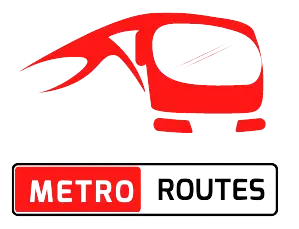Metro Rail Projects in India : Bridging Cities from Stations to Skylines
India’s population is expanding and the country is becoming more urban quickly, which creates challenging transportation problems, particularly in large cities. In an attempt to address these issues, the Indian government has made significant expenditures in the creation of metro rail projects around the country. By decreasing pollution, relieving traffic congestion, and improving connection inside cities, these metro rail systems provide an effective and environmentally beneficial form of transportation. Follow us to explore the history, present state, and future prospects of metro rail projects in India, emphasizing the advantages, difficulties, and significant influence these projects have had on the urban development landscapes.
Purpose of Metro Rail Systems:
Metro rail systems, often referred to as subways or underground systems, travel people throughout cities using electric trains. Reliability, efficiency, and sustainability are the main goals of these systems, which run only on separate tracks with assigned stations. Their main goals are to promote ecologically conscious urban growth, relieve traffic congestion, and shorten commute times.

India’s Metro Rail History:
India’s first metro project, the Kolkata Metro, was introduced in the 1980s, marking the beginning of the nation’s metro rail system. Following suit, additional cities embraced the need for similar systems amidst rising populations and transportation struggles. These early initiatives set the stage for further expansion and improvement of metro rail networks all over India.
Evolution and Growth of Metro Rail Systems:
Following the success of Kolkata, metro train projects spread to Bengaluru, Chennai, Delhi, and other cities. These endeavors, though they encountered early difficulties, eventually succeeded and became essential components of the infrastructure supporting urban transportation. Success stories of these preliminary attempts sparked interest and investment in spreading metro networks nationwide.
Major Metro Rail Projects in India:
This section showcases prominent metro rail projects in various Indian cities.
Each of these projects brings distinct qualities and ambitions, working diligently to cater to individual city requirements and expectations.
Impact and Advantages of Metro Rail in Indian Cities: Multiple Dimensions
Metro rail projects bring myriad advantages to urban environments, benefiting society at large scale.
Alleviated Traffic Congestion
Metro rail systems decrease reliance on personal vehicles, thereby lessening traffic density and smoothening vehicular movement.
Curtailing Air Pollution
Decreased dependence on fuel-based transport means lower emissions, leading to improved air quality and general well-being.
Boosting Economies
Metro rail projects generate jobs, invigorating various sectors such as construction, manufacturing, and transportation. Furthermore, property values near stations tend to appreciate, bolstering local economies.
Strengthening Social Fabric
Efficient transportation improves social interactions, allowing people to traverse distances easily, meet friends, family, or colleagues without hassle.

Overcoming Obstacles in Executing Metro Rail Projects
Implementing metro rail projects entails tackling multifaceted challenges, requiring strategic planning and innovation:
- Securing Finance: Balanced Budgeting
Procuring sufficient funds remains paramount, necessitating creative fundraising methods such as leveraging Public-Private Partnerships (PPPs), central assistance, and external financiers.
- Right-of-Way Acquisition: Harmony and Compensation
Acquiring land involves delicate negotiations with stakeholders, demanding fair compensatory packages, empathetic rehabilitation measures, and transparent communication channels.
- Engineering and Technology: Expertise and Novelty
Integrating advanced technology and recruiting seasoned professionals enable effective resolution of design, construction, and operation complications.
- Environmental Considerations: Mindful Planning
Green practices should underscore every step of the project lifecycle, preserving ecology and conserving resources whenever possible.
